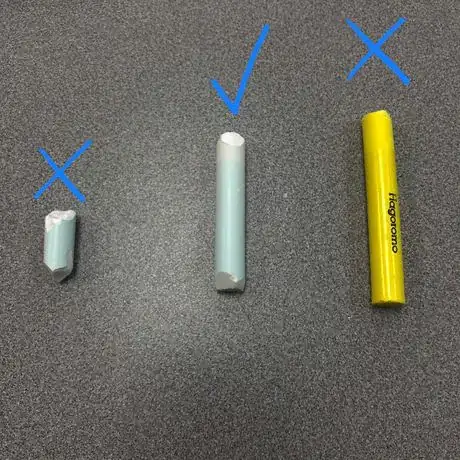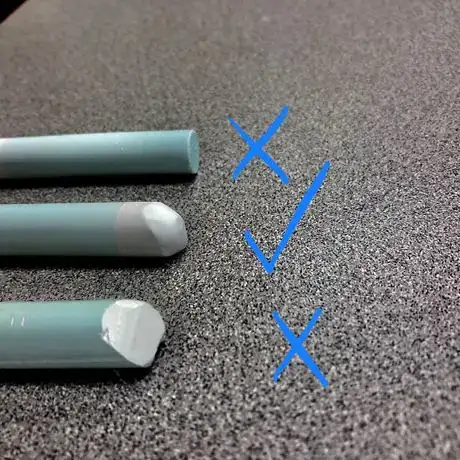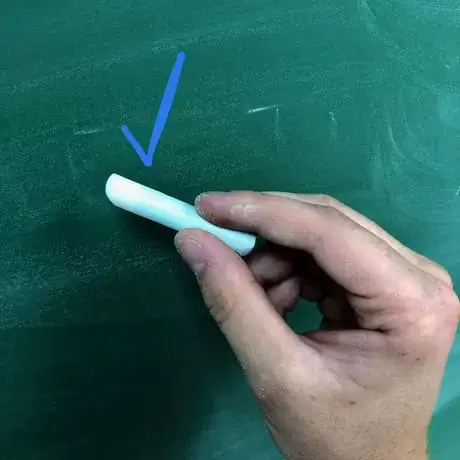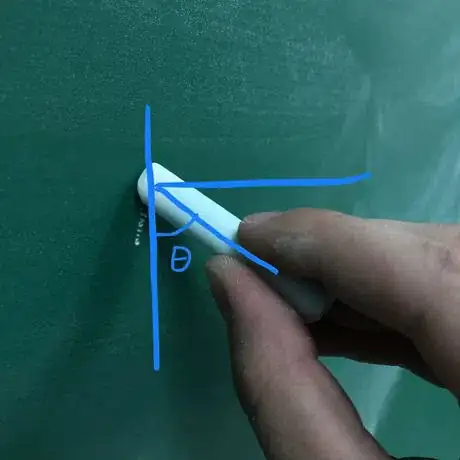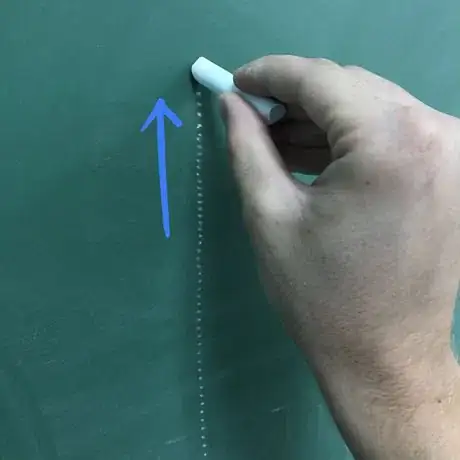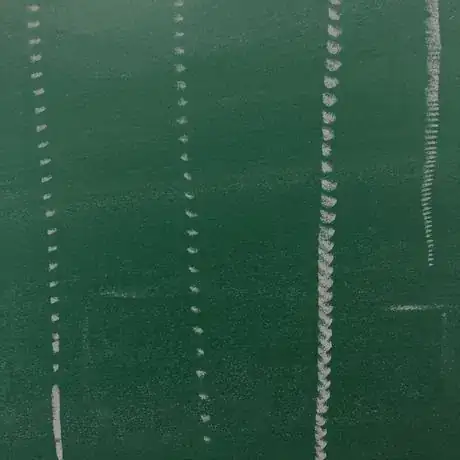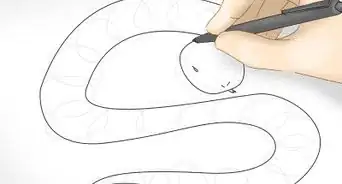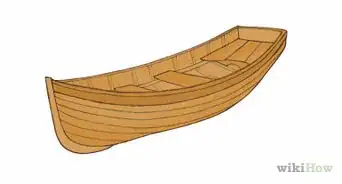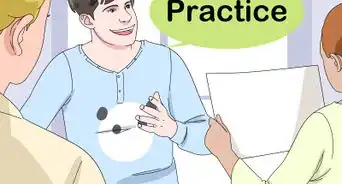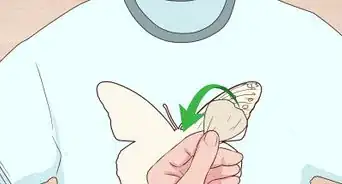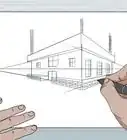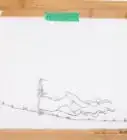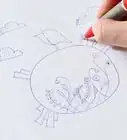X
wikiHow is a “wiki,” similar to Wikipedia, which means that many of our articles are co-written by multiple authors. To create this article, volunteer authors worked to edit and improve it over time.
This article has been viewed 17,393 times.
Learn more...
You may have seen videos of lecturers and college professors quickly drawing clean dotted lines on their chalkboards. You may not have known that it's also easy and satisfying for anyone to do. This article will walk you through the simple steps to make sharp dotted chalk lines and impress your friends or teachers!
Steps
-
1Select a healthy piece of chalk. You'll want a piece that is long enough to get a loose grip at the back end, but not one that is too long that it might snap. As your technique improves you'll be able to click with a wider range of lengths.
-
2Form the nib. Clicking chalk is easiest with a gently rounded piece of chalk. You won't want the harsh corners that come on a fresh piece, nor the completely flattened end of a well-worn piece. Use your thumb or the board to smooth and round the tip.Advertisement
-
3Grip properly. In order for the "jumping" action that creates the dotting, you'll need to allow the chalk to pivot in your fingers. Hold the chalk closer to the back end (about 75% down its length). Grip with the pads of your first two fingers and thumb. Make sure not to allow the chalk to slide back in your hand, but remember to allow your thumb to act as a fulcrum.
-
4Begin your line. Place the tip against the chalkboard and begin to push your hand forward. The chalk may begin to slide, but that's okay! You'll want to adjust the angle of the chalk with respect to the board so that it is near perpendicular. A good angle to try for is about 70 degrees, and adjust for the hardness of your chalk and the humidity in the room.
-
5Follow through. Once your chalk begins the "click" and forms a dotted line, try to keep a steady pace, and adjust your arm so that you don't end up locking your wrist. Maintain the proper angle until you are finished with the line.
-
6Experiment. Try playing around with the relationship between your angle, speed, grip, and force - many different shapes and sizes of dotted lines can be achieved. After a couple of practice sessions you're sure to be a master.
Advertisement
Warnings
- Don't breathe chalk dust.⧼thumbs_response⧽
- Some people really don't like the sound - be respectful of others when you click your chalk.⧼thumbs_response⧽
Advertisement
About This Article
Advertisement
